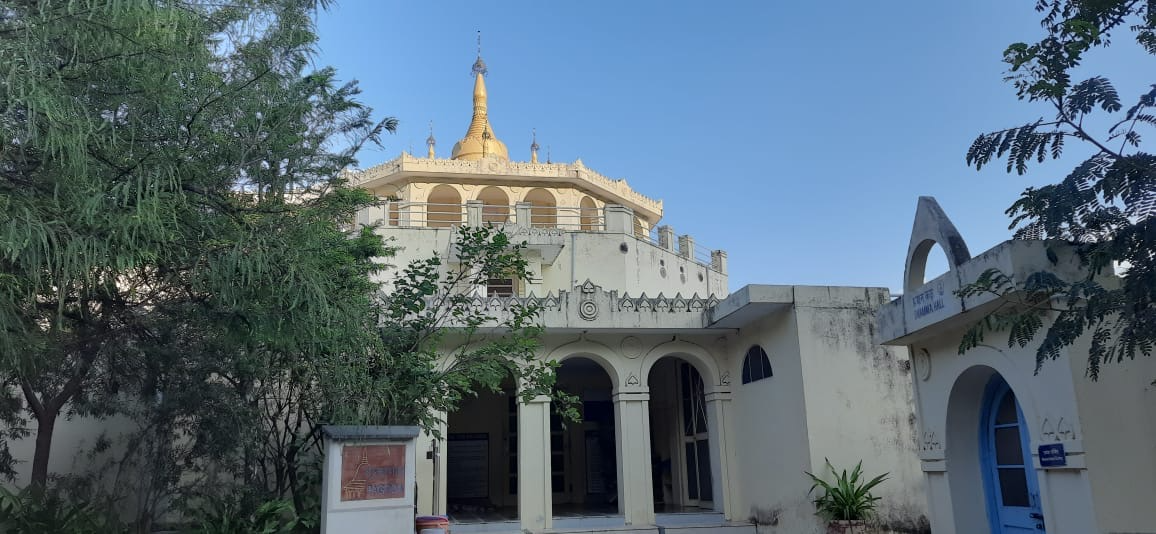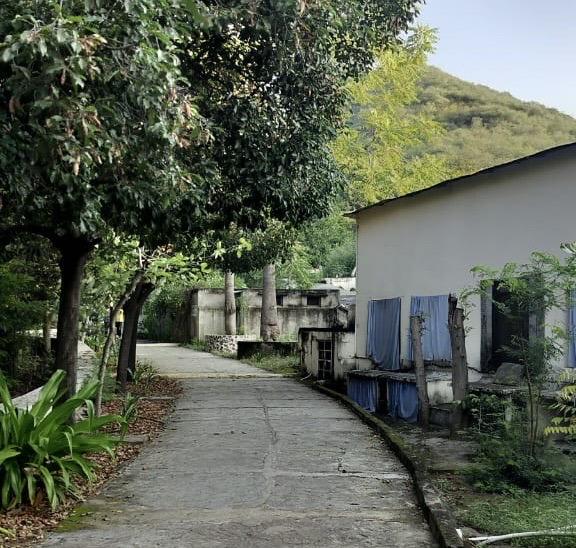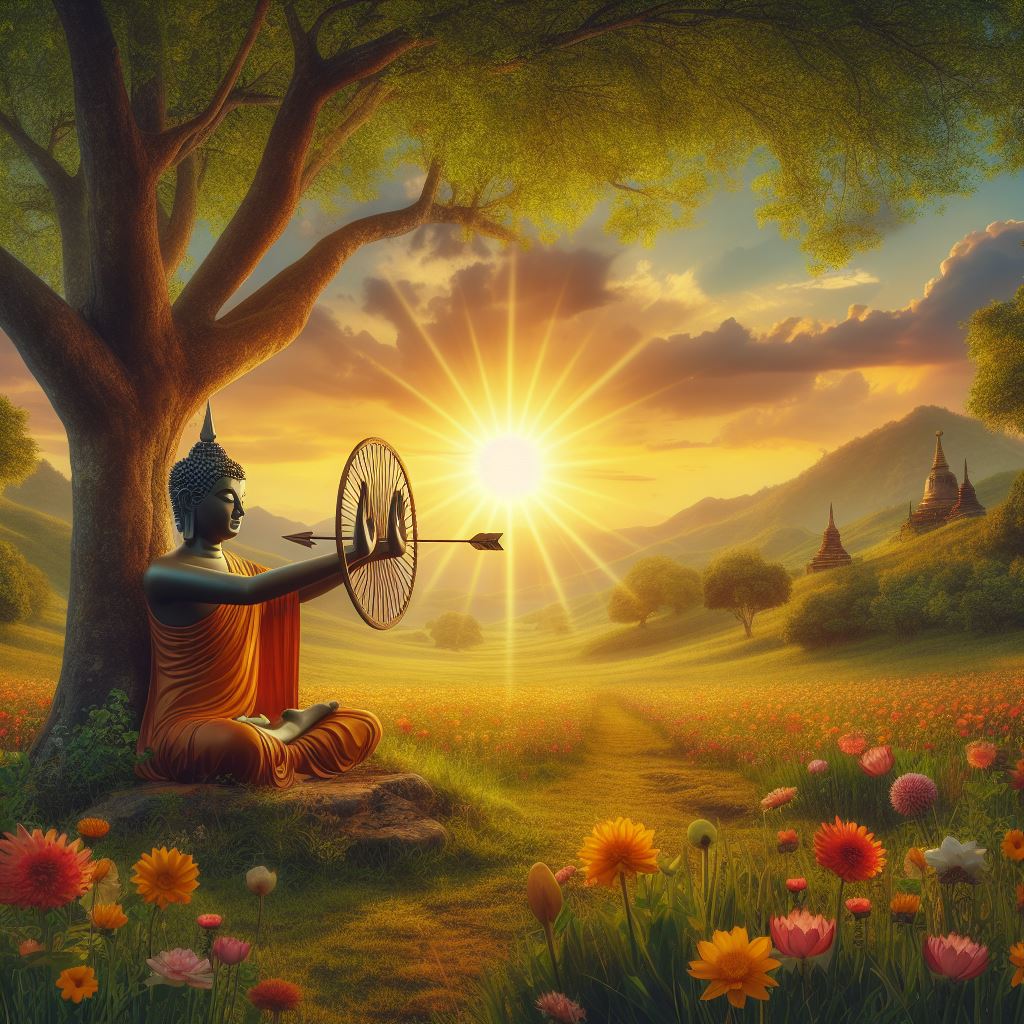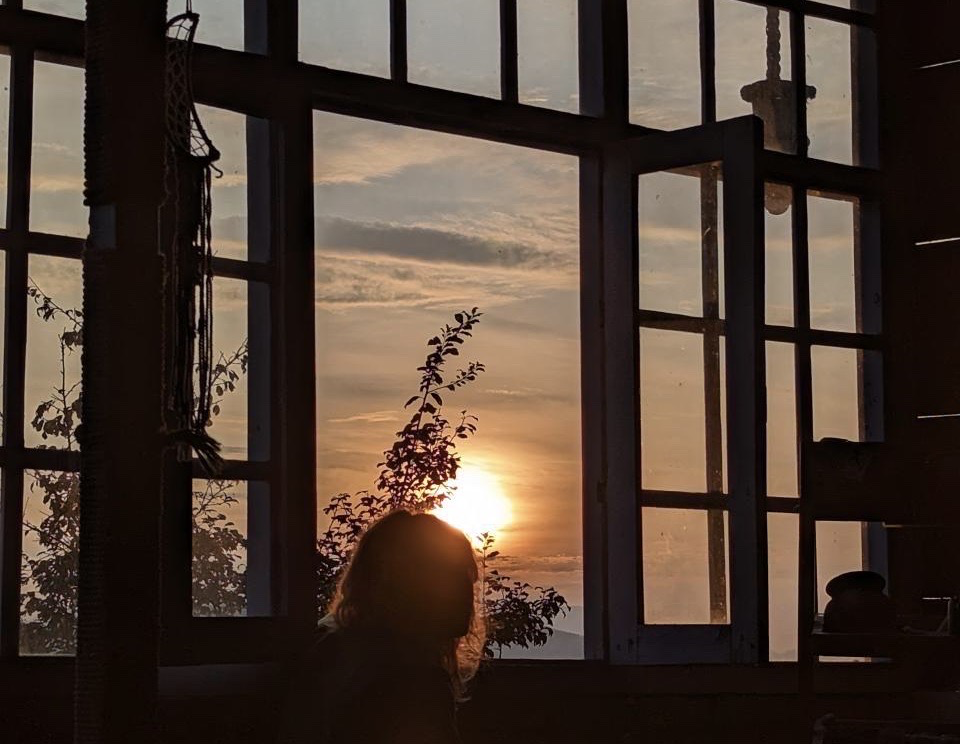Vipassana is a meditation technique rooted in Buddhist teachings that traces its origins back 2500 years to Siddhartha Gautama, also known as The Buddha. The practice involves a simple yet powerful method: scanning the body while maintaining equanimity towards thoughts and sensations. Vipassana means “seeing things as they really are” and provides the practitioner a pathway to free oneself from the shackles of perception and to embrace acceptance for whatever their current experience may be.
While spiritual practices often evolve, Vipassana has preserved its essence in Myanmar for millennia. In the 1970s, S.N. Goenka, a former successful businessman, rediscovered this ancient technique, leading him to dedicate his life to sharing it. Today, over 300 volunteer-run Vipassana centers worldwide offer a ten-day course, emphasizing noble silence and immersive meditation. Each day consists of eleven hours of meditation with breaks for food, instruction, and contemplation. In our age of constant stimulus, this course provides a unique opportunity to observe our thoughts and cultivate mindfulness.
At a Vipassana course, a student temporarily renounces all worldly possessions and follows ethical guidelines known as precepts with the purpose pf creating a conducive environment for meditation, mindfulness, and personal development. The five precepts are: abstaining from killing, stealing, sexual misconduct, false speech, and intoxicants. A vow of noble silence is a period of complete silence which includes refraining from speech, eye contact, or any other non-verbal communication. This creates an environment for deep introspection, and mindfulness. Students live at the center for the duration of the course and are provided with simple meals and accommodations.
To provide a sense of the daily rhythm, here is a glimpse at the Vipassana schedule:
- 4:00 am: Morning wake-up bell
- 4:30-6:30 am: Group meditation
- 6:30-8:00 am: Breakfast break
- 8:00-11:00 am: Group meditation
- … Repeating periods of meditation and breaks
- 7:00-8:15 pm: Teacher’s discourse
- 8:15-9:00 pm: Group meditation
- 9:30 pm: Lights out
My Journey Leading to Vipassana
In September of 2023, my quest for direct experience with Eastern spiritual practices led me to India. I sought an alternative perspective on life, differing from the Western ideals tied to status and material wealth. Amidst the teachings of Hinduism and Buddhism, I discovered Vipassana—a practice highly recommended for its life-altering potential. Despite my daily meditation routine and experience with endurance events, I didn’t fully appreciate what I was getting myself into. It turns out that sitting cross-legged for 12 hours per day and being alone with my thoughts for the ten days would prove harder than I could anticipate. Yet, as I learned though later integration, there are some lessons in life that can only be gained through direct experience; no amount of learning can replace hard work.
I arrived in Delhi a few days before the course. My senses were immediately assaulted with incessant honking, vibrant colours, a myriad of smells, and a mind-boggling sea of people. As a solo traveller, my vigilance was heightened as I anticipated scams or potential dangers. The train journey from Delhi to Jaipur showed me the heartbreaking sights of sprawling slums along the railroad tracks with countless people living in abject poverty. This was a reality that left me feeling powerless to make any difference. I was overwhelmed to say the least. I questioned why I had come to India of all places to try to find peace and answers when I couldn’t even find space to think. I had built up mental baggage to the point of insomnia the night before my Vipassana course began. Fortunately, a call with my family renewed my purpose and gave me the support I needed to continue.
The Dhamma Thali Center

The Dhamma Thali Center, just a few kilometers outside of Jaipur, proved a stark contrast to the previous few days. The center itself was simple but beautiful, and was meticulously maintained. There were large gardens with wild peacocks, monkeys, and a variety of walking paths. I realized that these would be my only sources of external stimulation for the duration of my stay. I found myself amongst about 130 men and about the same number of women, though they were segregated in their own quarters. We gave up our possessions including phones, laptops, books, journals, and any sort of food. Although we were allowed to talk, it was confined to hushed tones in anticipation of the silence that would soon follow. I exchanged a few names, but that was about it.We were assigned our rooms: partnered accommodations which consisted of a simple bed, a fan, and a bathroom equipped with cold water, a toilet, a bucket for a shower, and LOTS of resident ants. I learned that my roommate, Ivo, was a from Portugal and had come to India for similar reasons as me. We exchanged a few housekeeping rules and shared our anticipation for the journey ahead.
A gong rang and we were ushered into the meditation hall by volunteers. Our vow of noble silence had begun. No talking, no eye contact, and no communication of any kind. I again question what I was getting myself into. Our assigned meditation spots were simple: a thin cushion to sit cross-legged on, or chairs for those unable to sit. As I settled in, I braced myself for the inevitable pain I would endure sitting here for most of my waking hours. We received simple instructions recorded by S.N. Goenka: focus on the breath at the tip of your nose. That was it. This would be our guidance for the next days. Following a one-hour meditation session, we watched a video lecture on the technique and were dismissed to rest for the night.
Expectation and Seeing Things as They Really Are

The first night of my Vipassana journey began with persistent insomnia. However, elation replaced the previous overwhelm. As I stared at the ceiling, my body felt weightless and I felt content with everything. I had entered a bliss state. If this is what I could expect from Vipassana, I felt I was in for an enjoyable experience. However, this euphoria proved fleeting and provided me with considerable challenge for the duration of the course as I sought to regain this experience in vain. Throughout my stay, I found that 4 hours of sleep per night was enough to leave me feeling well rested. Little recovery was needed from full days of meditation.
We were woken at 4am to the sound of the Dhamma volunteer’s bells. As I got dressed, I thought of the fresh ground coffee I would be missing to get myself moving. Splashing water on my face would have to suffice. Everybody entered the meditation hall sleepily but eager as we began our first two-hour session.
While focusing on the breath at the tip of my nose, my thoughts naturally began to meander. When this happened, we were instructed to simply return our focus to the breath. The paradox is that the harder one tries to focus and relax, the harder it becomes. At times it felt like trying to still a tornado in my head. My mind’s reaction to this much stillness was revolt.
I found myself thinking about my expectations for the ten days, influenced by the accounts of others. The podcast host and author Tim Ferriss explained how Vipassana allowed repressed childhood traumas to emerge. A life coach I met spoke of Vipassana being more impactful than any psychedelic he had taken. A fellow in Jaipur described men crying uncontrollably from repressed guilt. In my head, I was preparing for a quasi-psychedelic experience where I would recall lost memories and heal through tears. Put another way, I was expecting BIG to happen. The elation I felt on the first night also faded and didn’t return. It was days later when I realized a miraculous transformation wasn’t likely to occur. Instead, I would have to fund answers in the subtlety of the experience. Admittedly, I did find myself crying silently during meditations as emotions were released.
This situation reminded me of the parable of the three blind men and the elephant: as three blind men encounter an elephant, one touched its side and says it’s a wall, another touched its leg and insists that it’s a tree, and the third grabs its tail and proclaims it’s a snake. All of them are partially correct, but missed the bigger picture. Much like this story, my expectations skewed the true nature of Vipassana and “seeing things as they really are”. We all have preconceived notions of how reality should be which skews our experience of the world. For example, In daily life, we expect a world with rational drivers and are then agitated when somebody swerved in front of us. Or, we expect those we are close with to behave rationally and are upset when they say or do something triggering. Vipassana teaches that expecting the world to conform to our ideals leads to suffering, but seeing and accepting things as they really are is the path to liberation.
Nothing Lasts Forever

The true Vipassana technique began on the fourth day. The first three days of focusing on our breath were intended to hone a single-pointed focus. Vipassana meditation involves meticulously scanning one’s body from head to toe in small, incremental steps. I found this to be slow at first, but became easier and faster with repeated practice.
The daily schedule incorporated sessions of “sitting with determination” where we were instructed to maintain a single posture with unwavering attention for one hour. The objective was to cultivate mental resilience by confronting discomfort and distractions with equanimity, reinforcing the impermanence of all experiences. These sessions brought forth an array of sensations ranging from fiery pain in my shoulders, back, hips, and knees to moments of joy, where I seamlessly scanned my body, sensing a ball of vibrating energy wherever my attention was.
Rather than judging these sensations, we were told to observe them objectively, as a doctor might examine a patient. By reframing pain as intense sensation, I was able to observe its changing nature and sit with it for longer. I noticed that it was never static but always changing. The intensity may increase and decrease, it may pulse to my heartbeat, move around, or disappear entirely. My present experience changed from one moment to the next. Though difficult, I was able to sit through the entire hour without moving by the sixth day.
Outside of meditations, I translated these principles to my mental state. When I found myself in a negative headspace, I began to notice that it would always change within a few hours. There were periods where I wanted to leave out of frustration, but was always able to find a reason to persevere before long. I had never before been in a state of such presence where I could truly observe these shifts happen. It dawned on me that reactions are not prerequisites for change, but that change is always taking place on its own.
In daily life, the default response to our discomfort is judgement and seeking immediate relief. This often takes the form of consumption, especially in a western culture. We numb our feelings by eating food, scrolling on our phones, or buying more things. While these are enjoyable and effective at temporarily removing the discomfort, they simply cover the pain rather than addressing it. Trying to remain equanimous to our emotions, and understanding the cyclical nature of arising and passing away enables us to stay present and navigate through discomfort towards understanding.
Buddhism and the Roots of Suffering

As the days of the course unfolded, I discovered a deepening sense of discontent within myself. I expected things to get easier, but the opposite was happening. I realized I wasn’t likely to have a transformative revelation, and questioned why I would subject myself to ten days of self-imposed hardship on my vacation. Boredom intensified and I missed human contact. As I sat with these contemplations, it dawned on me that these very thoughts and emotions were the vehicles through which I was to learn.
Vipassana imparts teachings of the Buddhist concept of dukkha, a state characterized by suffering and dissatisfaction. Dukkha is not externally imposed, but is a construct of our minds with its roots embedded in craving, clinging, and aversion.
Craving
Craving and desire extend beyond material possessions to encompass all aspects of life from longing for the perfect relationship to chasing exciting experiences. By seeking that which we don’t have, we create lack in the present moment which causes suffering. I found myself falling into desire frequently during my meditations. I thought about how good it would be to finally talk to somebody, hear from my family, or have a simple cup of coffee. I noticed how this diminished my present moment in contrast. Instead of embracing the security, freedom from responsibility, and peace of the present, my focus on unfulfilled desires became a source of my suffering. This pattern, I realized, extended to my everyday reality where desires prevented me from being happy with the blessed and fulfilling life I have.
Clinging
Clinging occurs when we obtain the coveted objects of our desire, creating attachment and integration into our sense of self. We cannot ‘have’ something without it becoming a part of who we are. This is phenomenon applies to material possessions and immaterial ideas like relationships, age, titles, and reputation. I found myself clinging to the expectations I had entered the course with. I couldn’t drop the idea that something big would happen, and was subsequently disappointed when it didn’t. Sitting with this concept, I understood the wisdom behind a monk’s renunciation of worldly possessions. Impermanence dictates that everything we identify with is destined to be lost, assuring suffering. While it is not possible for us to renounce all of our material possessions, opportunities exist elsewhere. We can lessen our attachments to the opinions of others, accept aging as part of the human experience instead of yearning for a body that is irretrievable, or think twice about that next pair of shoes. Ultimately, unchecked attachments limit us as they weigh us down and hold us back.
Aversion
In contrast with craving and clinging, aversion is dislike or avoidance – a pushing away. Between meditation sessions, I found myself dreading the next sitting as I anticipated the physical pain and boredom that session would bring. We often think of pain, whether physical or emotional, as something to be avoided as it can bring intense discomfort. While this is the correct response for something that threatens our life, most of what we encounter won’t permanently harm us, but can leave us stronger. Pain is simply a way that our body communicates, and leaning into these uncomfortable sensations can be a source of learning. Additionally, aversion creates suffering in the present moment in anticipation of the future. This is the concept of the double arrow in Buddhism. Pain and discomfort are guaranteed in life. This is the first arrow. The second arrow is the suffering we cause ourselves when we react with aversion and metal anguish to the first arrow. The first arrow is limited in its ability hurt us, while the second arrow has no such limit.
Although I was familiar with these concepts prior to the course, the experience of repeatedly encountering suffering and having to apply the principles was invaluable. No amount of knowledge is a substitute for direct experience. Part of the value of a Vipassana meditation course is found through the suffering it can create as a practitioner is tasked with confronting whatever arises to deal with it appropriately. The course felt like ten days if intensive neural re-wiring as I couldn’t live in my usual reactive mindset, but had to learn new, more effective behaviors.
We Are Not Our Thoughts

The final, and perhaps most profound lesson I experienced was the realization that I am truly not my thoughts. While many meditation and spiritual teachings touch upon disidentification with thought, the constant noise of the outside world and absence of stillness make it hard to realize. Vipassana creates an environment where a person may find themselves with a still mind for the first time in their lives. I found that my mind would become very still for extended periods; I could actually observe the gap between ideas and noticed an observer distinct from the stream of thoughts. As the days wore on, the recurring question of why I was dedicating ten days to silence in India surfaced: “why had I chosen this when I could be doing anything else with my vacation”? It eventually dawned on me that I wasn’t consciously inviting this thought in—it arose spontaneously. I wasn’t consciously choosing to think this way. This underscored the fact that we don’t control the thoughts that enter our mind, only how we react to them.
Noticing our thoughts and allowing them to pass away can only happen when we are fully conscious and present. Distractions rooted in past or present thinking, or over-identification with the thought can trap us in a reactive mindset. It is through deliberate practices of mindfulness and a commitment to presence that we can separate who we really are from thoughts entering our mind.
Conclusion
When my ten days of silence ended, I found that the simplest things gave me immense pleasure. Small conversations were a source of joy, and there was deep connection in looking into the eyes of other students. The thought of reading a book or writing in my journal felt equivalent to watching an captivating movie. The idea of looking at my phone or re-immersing myself in city life overwhelmed me. I realized how we become accustomed to stimulus and how it can distract us from being present. Since returning home, I’ve tried to enjoy the small things in life like going for a walk without music, meditating, or reflecting in my journal. Admittedly, I’m still very much the same person as I was before the course, just with a few more tools to help me on my path if I choose to use them.
I’ve realized that the path to enlightenment or higher consciousnesses is rarely found in a revelatory insight. Instead, it is the result of a lifestyle of hard work and continued practice. The goal is not to achieve perfection, but to approach it and acknowledge our wins and flaws along the way. This realization has inspired me to delve deeper into the teachings of Buddhism, recognizing its practicality and the tangible benefits it can bring to our lives. Ultimately, the conclusion I’ve drawn from this journey is that the pursuit if enlightenment is not a destination but a continual process, and the true value lies in the ongoing effort to integrate mindfulness into our daily existence.
